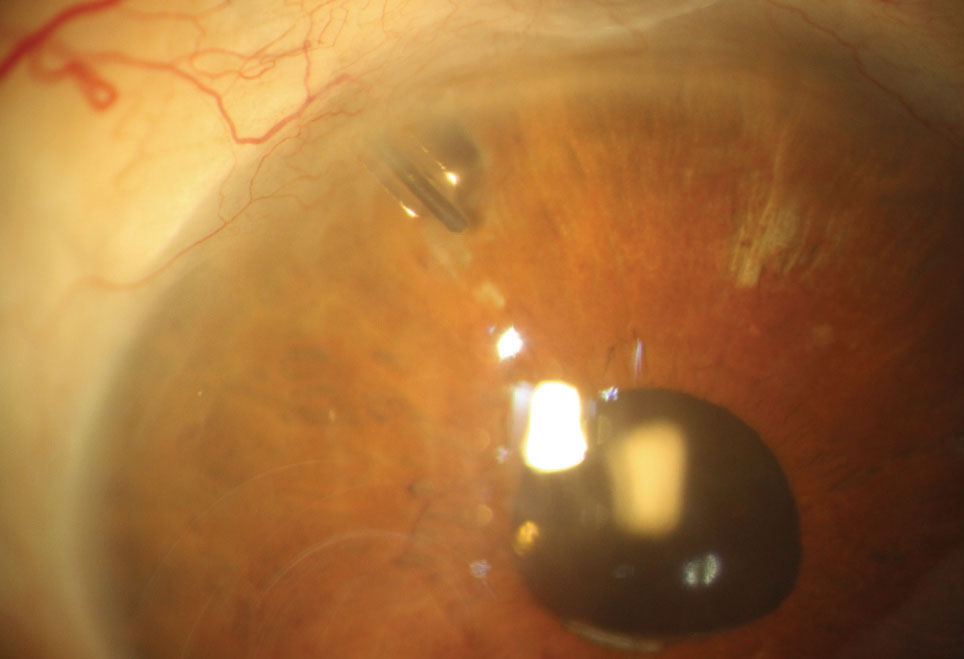 |
This study identified several risk factors for tube shunt failure. Photo: Justin Schweitzer, OD. Click image to enlarge. |
When a glaucoma patient’s progression cannot be checked by medications, SLT and (if appropriate) MIGS, it’s time to call in the heavy artillery: tubes and trabs. These more powerful interventions are also more fraught with complications. Studies have suggested younger age, male gender, African descent, lower preoperative IOP and neovascular glaucoma are all predictors of tube shunt failure, but there is limited information regarding risk factors associated with surgery failure. Researchers recently sought to identify these risk factors in a pooled analysis.
A total of 621 patients with glaucoma were enrolled, including 276 patients from the Ahmed Baerveldt Comparison Study, 238 patients from the Ahmed Versus Baerveldt Study and 107 patients from the tube group of the Tube Versus Trabeculectomy Study.
Younger age was found to be a significant risk factor for tube shunt failure. Younger age is also a risk factor for failure of trabeculectomy surgery, most likely due to younger glaucoma patients tending to have higher rates of concomitant secondary or complex glaucoma, be more likely to have had previous surgery and be more likely to be Black, all of which are also known risk factors for filtration failure, the authors explained. They suggest it’s likely younger patients are at higher risk for tube shunt surgery for similar reasons.
Neovascular glaucoma was another risk factor, which has been reported in previous studies. “The conjunctiva of patients with the diagnosis of neovascular glaucoma is typically inflamed and has a propensity for vigorous postoperative scarring around the implant and subsequent increased resistance across the fibrous capsule,” the authors explained. “This may lead to both a hypertensive phase in the months following surgery and subsequent surgical failure. Many patients with neovascular glaucoma had markedly elevated IOP and poor visual acuity preoperatively.
Lower preoperative IOP was also strongly associated with surgery failure. The Tube Versus Trabeculectomy Study and the Primary Tube Versus Trabeculectomy Study both found patients with lower preoperative IOP benefited most from trabeculectomy with mitomycin C over tube shunt surgery.
“Our study results also suggest that low IOPs are difficult to obtain with tube shunts. The higher failure rate among patients with preoperative IOP less than 21mm Hg was usually because a 20% reduction in IOP from baseline was not achieved,” the authors noted.
The cumulative probability of tube shunt failure was 38.3% at five years. Glaucoma experts have previously said that failure of tube shunts occurs at approximately 10% per year. The lower failure rate observed in this study may relate to the patient population, the authors suggested.
“It is noteworthy that nearly half of the patients enrolled in the Tube Versus Trabeculectomy Study had only prior cataract extraction as their qualifying ocular surgery,” the authors noted. “Modifications in implant design may also have contributed to a higher success rate in our study.”
Bowden EC, Choudhury A, Gedde SJ, et al. Risk factors for failure of tube shunt surgery: a pooled data analysis. Am J Ophthalmol. February 27, 2022. [Epub ahead of print]. |

